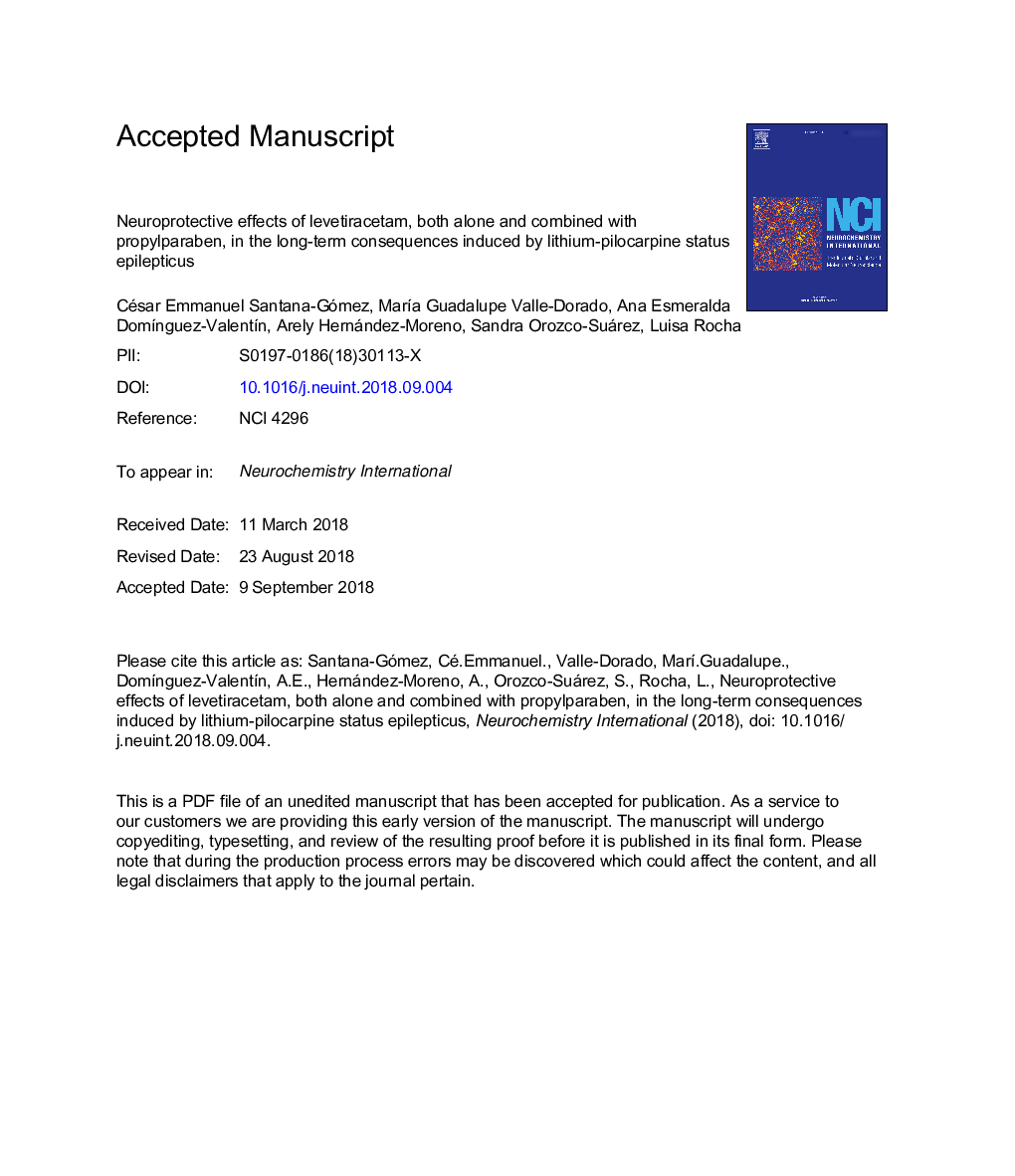| Article ID | Journal | Published Year | Pages | File Type |
|---|---|---|---|---|
| 11034002 | Neurochemistry International | 2018 | 42 Pages |
Abstract
Status epilepticus (SE) is a neurological condition that frequently induces severe neuronal injury in the hippocampus, subsequent epileptogenesis and pharmacoresistant spontaneous recurrent seizures (SRS). The repeated administration of LEV (a broad-spectrum antiepileptic drug) during the post-SE period does not prevent the subsequent development of SRS. However, this treatment reduces SE-induced neurodegeneration in the hippocampus. Conversely, propylparaben (PPB) is a widely used antimicrobial that blocks voltage-dependent Na+ channels, induces neuroprotection and reduces epileptiform activity in vitro. The present study attempted to determine if the neuroprotective effects induced by LEV are augmented when combined with a sub-effective dose of PPB. Long-term SE-induced consequences (hyperexcitability, high glutamate release, neuronal injury and volume loss) were evaluated in the hippocampus of rats. LEV alone, as well as combined with PPB, did not prevent the occurrence of SRS. However, animals treated with LEV plus PPB showed high prevalence of low frequency oscillations (0.1-4â¯Hz and 8-90 bands, pâ¯<â¯0.001) and low prevalence of high frequency activity (90-250 bands, pâ¯<â¯0.001) during the interictal period. In addition, these animals presented lower extracellular levels of glutamate, decreased rate of neurodegeneration and a similar hippocampal volume compared to the control conditions. This study's results suggest that LEV associated with PPB could represent a new therapeutic strategy to reduce long-term consequences induced by SE that facilitate pharmacoresistant SRS.
Related Topics
Life Sciences
Biochemistry, Genetics and Molecular Biology
Cell Biology
Authors
César Emmanuel Santana-Gómez, MarÃa Guadalupe Valle-Dorado, Ana Esmeralda DomÃnguez-ValentÃn, Arely Hernández-Moreno, Sandra Orozco-Suárez, Luisa Rocha,
